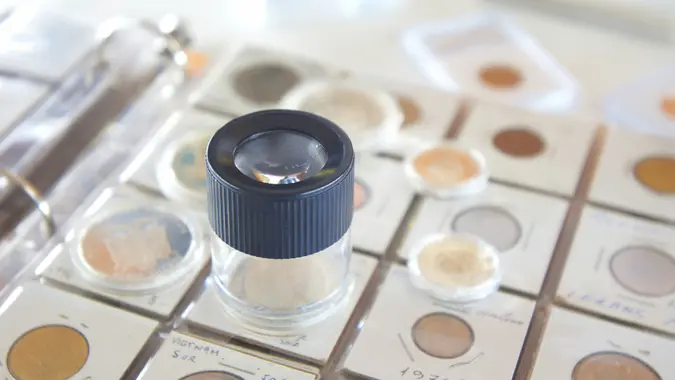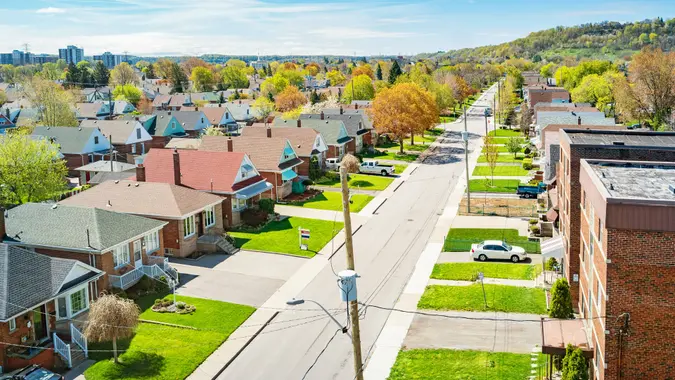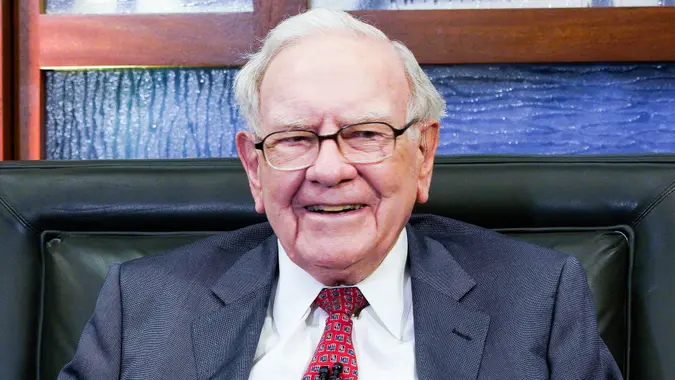‘Doom Spending’ Only Feels Therapeutic — 3 Ways It’s Harmful To Financial Well-Being

Commitment to Our Readers
GOBankingRates' editorial team is committed to bringing you unbiased reviews and information. We use data-driven methodologies to evaluate financial products and services - our reviews and ratings are not influenced by advertisers. You can read more about our editorial guidelines and our products and services review methodology.

20 Years
Helping You Live Richer

Reviewed
by Experts

Trusted by
Millions of Readers
CNBC recently reported that consumer spending has remained very strong in the face of challenging economic headwinds.
And while the U.S. economy is on the rise once again, 96% of Americans are concerned about the current state of the economy, according to a recent CreditKarma report. At the same time, 27% of Americans “doom spend” to cope with stress, and 32% have taken on more debt in the last six months amid a 27% increase in spending. This increase in spending isn’t necessarily indicative of improved finances among Americans.
The study goes on to explain that when it comes to the economy, 56% of Americans are concerned about inflation, 50% are concerned about cost of living increases and 23% are concerned about unaffordable housing.
Of those who are concerned about the economy, 48% say not having enough money to afford essentials such as food, clothing, and rent are their biggest concerns when it comes to how a poor economy could impact them. This is followed by 34% who are afraid of going into debt and 30% who are worried about not being able to spend money on things that make them happy.
What Is Doom Spending?
Doom spending refers to making purchases as a way to cope with the current state of the economy and foreign affairs. It’s a sort of retail therapy and an emotional response to deal with negative events — perhaps ultimately, it’s a behavior which can lead to higher levels of debt.
Kaitlin Walsh-Epstein, chief marketing officer at Laurel Road, explained her perspective on doom spending.
“From economic uncertainty to the resumption of student loan payments, the last six months have been exceptionally stressful for many Americans,” said Walsh-Epstein.
She explained that when people feel like their financial goals seem out of reach, it can be easy for them to fall further behind by adopting unfavorable habits like doom spending.
How Doom Spending Is Harmful To Your Finances
Doom spending can harm your finances in several ways:
Increased debt: Excessive doom spending can certainly lead to more debt. If you’re incurring credit card debt, this can compound quickly thanks to high interest rates. With increased debt also comes elevated monthly interest payments, which erode your finances and put you deeper into debt.
More time needed to achieve life’s milestones: If you’re doom spending too often, you could be spending money that could otherwise go towards important life milestones. These can include the purchase of your first home, having a child, pursuing higher education, or taking a memorable vacation with your loved ones.
Less cash flow for necessities: Unchecked doom spending can mean less cash flow in your bank account for necessary monthly expenses such as rent, utilities, and groceries. Cash should be reserved for these essential expenses first each month before spending on anything else.
On the whole, controlling your doom spending is crucial to avoid long-term financial problems.
Tips For Dealing with Doom Spending
Walsh-Epstein provided some further tips on how to deal with doom spending:
Find a balance in your spending and saving: This is important to make sure your expenses line up with your financial goals and vision for your future.
Take a pause before making a purchase: Take a minute to carefully determine if a particular purchase satisfies a need or a want, if it prevents you from fulfilling another financial obligation, or if you are simply making an impulsive purchase for short-term satisfaction.
Add money to your savings rather than spend more: Rather than making an impulse buy, take the money you were willing to part with and put it into a high-yield savings account. Watching your money grow over time instead of spending more will help you reach your financial goals faster.
“A tip I often share with others is that when I want to make a big purchase or buy something I may not necessarily need online, I will add it to my shopping cart and think about it for a day. If after 24 hours I return to my cart and still feel I want or need the item, I’ll buy it,” said Walsh-Epstein.
More From GOBankingRates
 Written by
Written by  Edited by
Edited by 

























